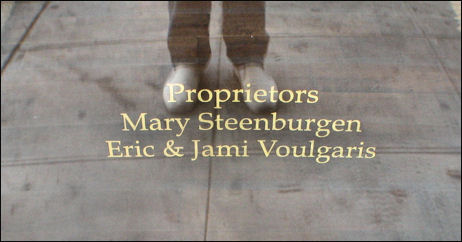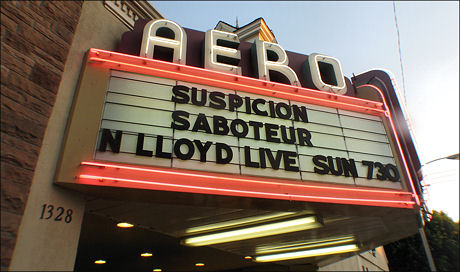The restored Aero Theatre — the westside flagship for the American Cinematheque — is a single-screen venue on an affluent, relatively quiet Santa Monica boulevard. Nice people run it and nice people — a mostly older crowd — are always there. An Italian ice store is just down the the street, an antique furniture store that Mary Steenburgen is a co-proprietor of sits next to it. The whole quiet-community atmosphere is like a Valium. The vibe at the Arclight or the Bridge or the Monica Plex on Second Street is fine, but the Aero feels like yesteryear.
Last night’s experience was very much like seeing a movie on a quiet summer night in a small town in the ’60s or ’70s. The Aero is a remnant of the modest- sized, personably-managed theatres that you could find in every last small town in America before the plexing boom of the ’80s.
On top of which the sound and projection standards at the Aero are superb, and they’re always showing good films there. On a wisp of a whim Jett and I went there last night to see Alfred Hitchcock’s The Man Who Knew Too Much, and the show was all but sold out. Madeleine Stowe, whom I’ll always have a thing for because of her performance in Stakeout 20 years ago, and her actor husband Brian Benben and their daughter sat right next to us.
And it was nice to see a still-pretty-good Hitchcock film with a good crowd that laughed and “oohed” and “aahed” from time to time. There’s a moment on the Casablanca-to-Marrakech bus in the beginning when James Stewart asks an Arab-French gentleman named Louis Bernard (Daniel Gelin) why a Muslim man has gotten so upset with his son for accidentally pulling off his wife’s veil (“It was just an accident”) and Bernard replies that “Muslims aren’t very comfortable with accidents,” or words to that effect. That got a kind of murmuring dark laugh.

The downside is that The Man Who Knew Too Much didn’t look anywhere near as good as it does on the digitally remastered DVD that came out in February 2006. Not even close. Or at least, not from where we were sitting in the fourth or fifth row. The print was fairly new and scratch-free, but it wasn’t that much of a treat. Maybe if we had sat in the rear rows.
Almost all color movies from the ’50s and ’60s look somewhat underwhelming — grainy, fuzzy, under-saturated, not detailed enough — by today’s standards when you see them in a theatre. The last time I saw an older color film that looked really exceptional was when I saw Gone With the Wind at the Academy theatre two or three years ago. The digitally remastered, 4K-projected Singin’ in the Rain that played there was supposed to be pretty good also.










